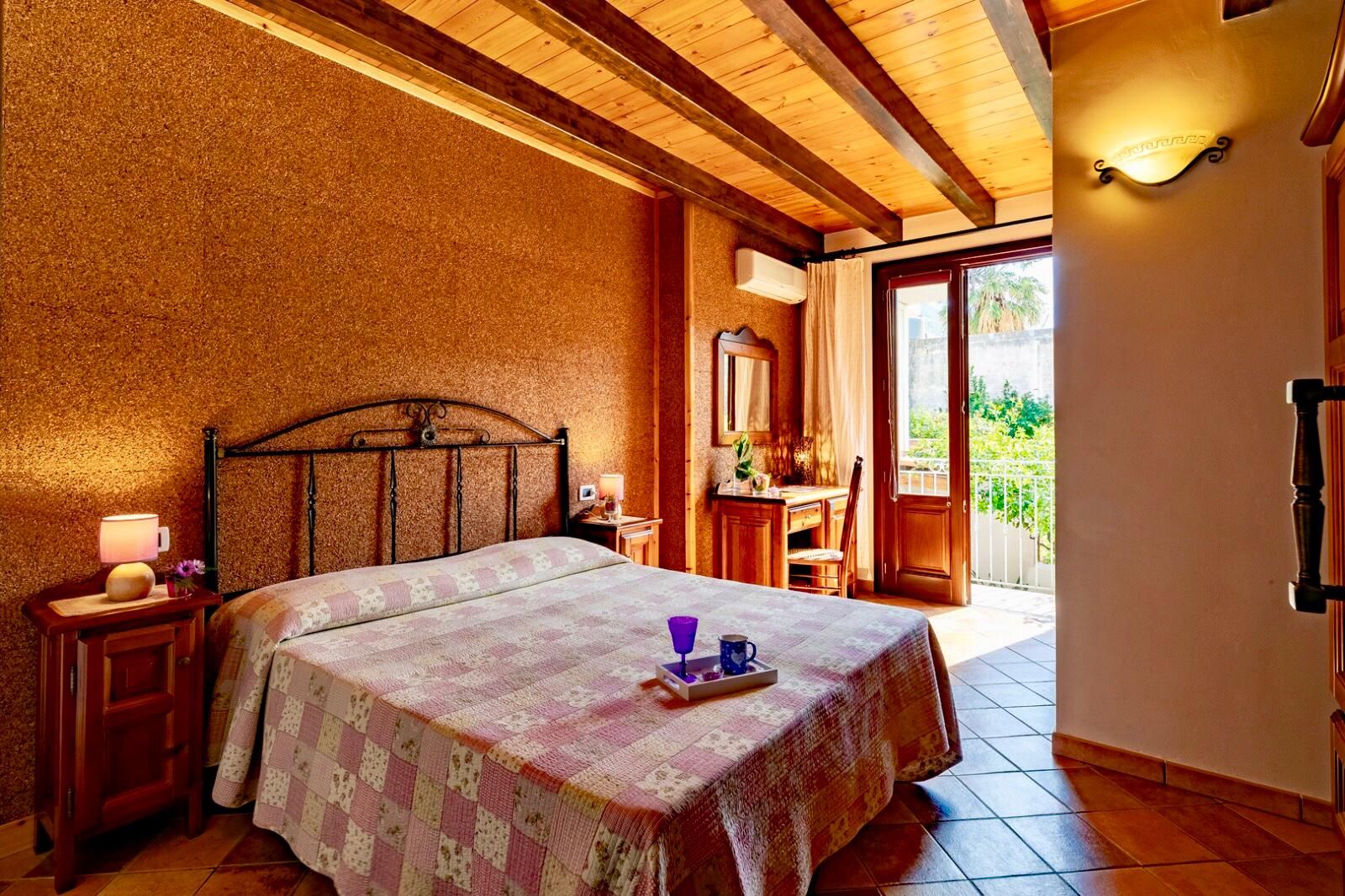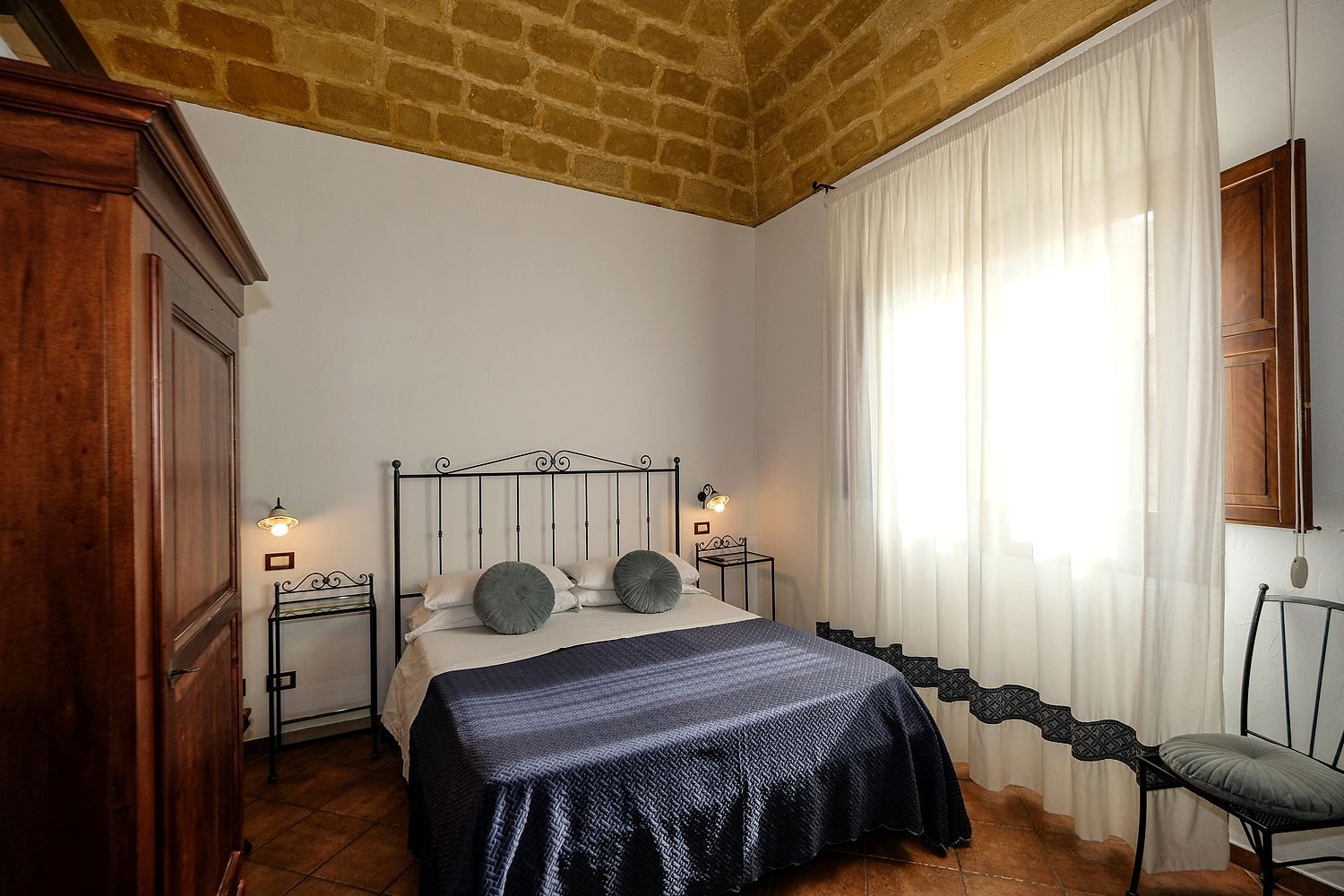A city rich in history
Calatafimi-Segesta has a leading role in both myth and history. After his labors, Heracles rests on the bank of the Caldo River (today's Terme Segestane), while Aeneas, fleeing from Troy, chooses this site to found the city of Acesta.
Its name, Calatafimi-Segesta, immediately suggests the historical and geographical continuity with the nearby Segesta Park, one of the most fascinating and well-preserved archaeological sites in Sicily.
Walking through the streets of its historic center you can sense the cultural richness left by the populations who have dominated it since the 9th century. Alleys, courtyards, underpasses and stairways intertwine with each other creating very suggestive views, while the churches, more than thirty, preserve true jewels of religious art. And then, balconies, fountains and squares, always adorned with plants and flowers, a true homage to the surrounding nature.
Calatafimi-Segesta was an important commercial center both under Arab rule and subsequently under Norman domination. Today, in synergy with the extraordinary cultural activities promoted by the Archaeological Park (Dionisiache), it aims to make its religious and gastronomic traditions known.
December brings with it two very heartfelt events: the nocturnal procession of the Immaculate Conception and the Living Nativity scene which takes place in the ancient neighborhood of Li Ficareddi, while in the summer various food and wine festivals are held

What to see in Calatafimi - Segesta
In town
The Eufemio Castle, a dive into the Middle Ages
A walk to the top of the hill where the remains of the Eufemio Castle are located is absolutely unmissable. A place full of charm and magic, the castle overlooks the town and in the Norman period it had the purpose of defense. It was built by the Normans on the remains of an ancient castle whose roots lie in the myth of Aeneas. In 1100 it hosted the troops of Frederick II and, after being the seat of several governors and feudal lords and also as a prison, it was abandoned in 1868.
From the castle you can enjoy a magnificent view of the surrounding countryside and hills.
Itinerary of the thirty alleys.
A walk through its thirty alleys will immerse you in the life of the town, its past and its memories. Many hidden corners that you will immediately want to photograph.

The Garibaldi house-museum
From the balcony of this building which was the home of Antonino Pampalone, parish priest and fervent liberal, Giuseppe Garibaldi spoke to the crowd gathered on 16 May 1860 after the clash with the Bourbon army. The Museum is located a few steps from the Municipal Palace.
The Wheel of Projectiles
On the façade of the former civic hospital from the 1500s, a small window is still visible, called the Ruota dei Proietti, which in the past was used to welcome abandoned children.
Former Convent of San Francesco d'Assisi, today Ethno-Anthropological Museum
The museum, housed in the former Franciscan convent, founded in 1543, collects a series of ancient household objects and work tools and equipment. A place where every object refers to customs and lifestyles of the past.
Mother Church of San Silvestro Papa
The main nucleus of the church dates back to 1100, but between the 15th and 18th centuries the building, unable to contain all the faithful, was enlarged. The facade is simple, inside there are three naves where the Renaissance style prevails. The marble polyptych from 1516 located in the apse is of considerable value.
Church of the Santissimo Crocifisso
Built on the remains of the ancient church of Santa Caterina d'Alessandria, the church of the Santissimo Crocifisso is linked to miraculous events that occurred in 1657, when the wooden Crucifix, present in the sacristy, produced miraculous healings. Inside we find beautiful frescoes and among the paintings the simulacrum of the Madonna of Trapani by Domenico La Bruna (1760).
Church of San Michele Arcangelo
This church dedicated to San Michele dates back to the 15th century. The stoup and the statue of San Michele from 1490 are splendid. The current wooden roof was rebuilt after the damage caused by the Belice earthquake of 1968.
Segesta archaeological park
Roman Cry
The Mausoleum, designed by Ernesto Basile, stands on the Pianto Romano hill, a few minutes from Calatafimi-Segesta, in the place where Garibaldi and the Bourbon army clashed on 15 May 1860.

Linked news

Polle of Crimiso, the free SPA of the gods
The oldest spas in western Sicily are located a few kilometers from the Temple of Segesta, immersed in a lush and fascinating natural contex...




_7327.jpg)




